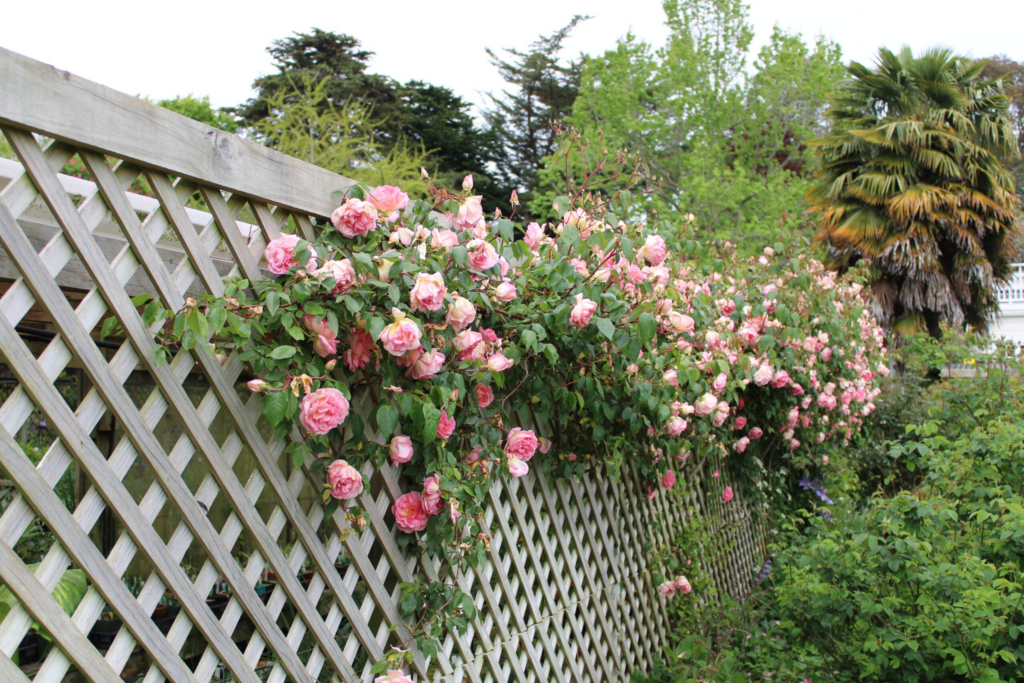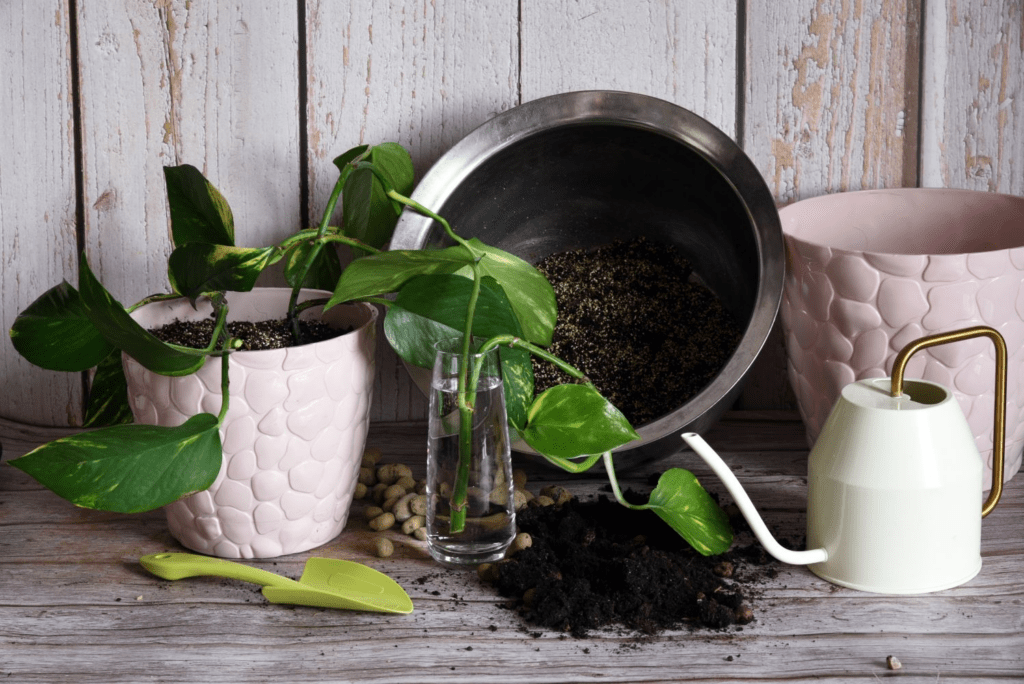How to grow Devil’s Ivy Pothos (Epipremnum) – Guide and Care
Have you ever wondered if a Devil’s Ivy pothos plant can cause harm to your pets or children? Yes, you heard it right. I also have the same concern that planting a Devil’s Ivy can cause health problems such as vomiting and nausea, and if not taken care of properly, it could kill them.
After hearing this, I did deep research to learn about their history and details for growing Devil’s Ivy pothos carefully. Don’t worry, if you want to grow them as your houseplants I have explained all the ways to grow them carefully so that they won’t cause health issues for your pets or children.
Quick takeaways:
- It is an easy-to-care, house plant, having long, trailing stems and variegated heart-shaped leaves.
- The devil’s Ivy is also known as Epipremnum Aureum or Golden Pothos.
- They are able to grow from dimly lit rooms to bright light.
- You can plant or even the devil’s ivy at home, which will make a lovely addition to your home at any place.
History and Cultivation:
- The Devil’s Ivy is a climbing wine native to islands in the South Pacific Ocean some say its origin is in the Solomon Islands while others say it is from the Korean Society island of French Polynesia.
- Although they have made them up to grow in tropical and subtropical forests worldwide.
- They are now found in forests of northern South Africa, Australia, Southern East, and South Asia, the Pacific islands, and the West Indies.
- They are used to twist up all around the trees which tend to develop much larger leaves than indoors.
- Growing them to make their leaves grow 39 inches long by 18 inches across while in the forest, the leaves tend to grow about 3”x2” on thick, and 50-foot-long vines.
- These plants are becoming an invasive species, which is causing ecological damage to the balance around the world.
- They used to take over the forest floor, making their way around the tree trunks.
- However, in Sri Lanka, they used to decimate at least two rainforests.
- This plant has also caused extreme ecological damage throughout Asia, Australia, and the West Indies.
- The devil’s Ivy is able to survive in shady outdoor areas.
- They thrive best in the USDA hardiness zone from 10 to 11 in containers.
- According to the US state, it is considered illegal to plant these plants outdoors because of their invasive tendency.

After knowing their history and cultivation let’s learn the way to grow devil’s Ivy.
How to Grow Devil’s Ivy Pothos:
The devil’s Ivy plant is a tropical evergreen climber and well known for its trailing vines which are used to grow about 12 to 18 inches per month and reach about 20 to 40 feet when they fully mature.
These are both plants that don’t climb walls on their own. You need to provide help to trail the wine if you want them to climb. Don’t worry they will not cause any structural damage to the wall. You can opt for trailing options which allow the winds to grow upward, outward, or downward.
Draping:
- The most common way to display the pothos of vines is by draping them around the room.
- You can easily trail your pothos line around the room which means over the top of the furniture around the door window frame and long fences.
- When you find the vines started to grow long, then you can give directions to them on top of the wall or around windows or doors.
- While using them to climb up, you can use a clear command hook which is perfect for growing the plant.
Trellis:
- Growing, the vines on Trellis will provide a specific structure to place the vines.
- You can easily place the trellis on the pot or you can also keep it to the wall near the plant.
- There is no substrate for the wine to route into like you have on the tree in the wild so you need to guide the wines and make them attach to the trellis while growing.
- By the plant, twisting and tying will help to secure the vines.

Moss Pole:
- Using a moss pole will allow the plant to grow upward.
- It is used to mimic the way the pothos grow in the forest.
- While misting the plant growing on the moss pole, do simulate the moisture level in the natural environment.
- It will act as a substrate in which the plant can root and grow here the root dig into the moss pole the same way trees bark in the wild.

The following are some steps for creating Devil’s Ivy Pothos totem:
Step-1: Soak moss pole:
If you are misting the plant on the moss pole after finishing you can omit this step.

Step 2: Interesting pole into the pot:
There are options for choosing either to insert a pole into the dirt or in the back of the pole.
Step 3: Wrapping the vines to the pole:
For wrapping the vine to the pole you can use floral pins, velcro strips, orchid plant clips, or garden twine which is secure in building the longest vines to moss on the pole and the shorter vines are able to drape outside of the pot unless they use to grow long enough that makes them climb the pole.

Hanging Pot:
If you don’t want the pothos vines to grow upward and outward you can choose them to grow downward in a hanging pot. You have an option of cutting vines that are too long.
Make sure to choose a hanging pot, that is having attached sauce which will help prevent ruining the floor underneath in which there is dripping water. You can use the devil’s ivy pothos hanging pots in front of a window which will act for privacy or opening between rooms.

Devil’s Ivy Pothos Care:
To grow devil’s Ivy pothos you need to provide them proper care such as giving them filtered bright light, giving them water between 1-2 weeks, and adding fertilizer every 2-3 months.
The plants are considered very low maintenance and used to grow even if you forget some time to water, fertilize, and light. That is why these plants are valuable to grow as indoor gardeners.

The following are some basic requirements that you need to provide to your devil’s Ivy pothos:
Light
- In order to meet the light requirements you need to place the plant in a place where it gets bright filtered light most of the day.
- Light provided to plants through slatted blinds or frosted glass is considered perfect for them.
- Provide the devil’s Ivy pothos with more light that will grow brighter yellow variegation on the leaves.
- Here are some good places for keeping devil’s Ivy pothos indoors from which they get indirect light:
- You can place them near the window but not in a window.
- Placing them in a bathroom in which they get lots of light from a frosted window.
- You can also place it in a sunny room having dappled light getting through a blind or curtains.
- In case, you see the devil’s Ivy growing in the office, do you wonder if it belongs to the Pothos family that tolerates medium or low light but is not used to growing quickly.
- There are many people who love to grow them in offices having fluorescent or incandescent bulbs instead of getting natural light.
- It is the pothos plant that can grow under LED lights in which you can adjust the lights and is ideal for foliage growing. There are some LEDs that also come with time to mimic sunlight.
- In case, you are placing the pothos outdoors in a pot it can easily handle full sun or partial shade.
Water:
- If you really want to know how much light does devil’s Ivy Pothos needs then I will suggest you water them every one to two weeks.
- The water needs of pothos does depend on how much amount of sunlight your plant gets and the humidity of the room.
- In case you find that the top one or two inches of the soil is dry then you really need to water the pothos again.
- According to my experience, it is better to underwater the pothos rather than overwater them.
- The devil’s Ivy pothos plant can tolerate wet and soggy soil and overwatering the plant will result in leaves turning yellow and vines starting to get wilted.
Temperature:
- In order to maintain the perfect range of temperature you need to provide them between 70°F and 90°F and having above or below temperatures will make them not to grow well.
Humidity:
- You need to provide pothos with humidity that ranges between 50% and 70%.
- The Devil’s Ivy is a pothos plant that tolerates a lower humidity environment and they use to grow better in humidity that gets imitated from a natural tropical forest environment.
- In case you find the leaves of the plants turning brown then it’s a sign that the air around the plant is too dry.
- The only way to increase the humidity of tropical plants is to place them in a pot saucer having a large saucer that needs to be filled with pebbles and water.
Fertilizing:
- Providing the pothos plants with fertilizers will make them develop and mature quickly.
- The plant will grow at having optimal growth rate if you provide the plant with fertilizer every 2-3 months that too in the growing season.
- The best time to fertilize the plant is in the growing season such as from December and May and you dont have any need to fertilize the plant from June through November.
- The perfect balanced ratio of fertilizer to grow is about 20-20-20 in which there is 20% phosphorous, 20% potassium, and 20% nitrogen.
Flowering:
- In the wild, the devil’s Ivy Pothos tend to grow upto 35-40 feet long when they are matured.
- The pothos do not reach this size if you dont provide them trees to climb and the only time you can get flowering of pothos is in a tropical forest.
- They are used for growing in erect flower stalks having a cream-colored spathe and purple around the spadix.
Maintenance:
- In case you find that the plant’s root has started to pour out of the container’s bottom then it’s high time and sign that it is high time for repotting the plants.
- In time to repot them you need to repot them into a larger container.
- The pothos plant does tolerate heavy pruning which also encourages the growth of pothos.
- To propagate the plant you need to trim parts and then fill it with any sparse patches present in the pot that will help you to start a new plant. The following are the steps to trim the devil’s Ivy pothos plants.
- You need to pinch off the new shoot tips for the growing season that help in forming buds from new vining systems and you need to keep plant foliage dense and compact.
- Make sure to remove the dead, damaged, or diseased leaves or stems using a clean knife or scissors.
- You need to trim the overgrown vines as per the design you need.
- Cutting of leaves will increase new growth above the leaf node.
- In case, the plant needs more fullness or has started to become too leggy you need to trim all the stems upto 4 inches from the soil. Going with extreme cutting will encourage a flush for new growth of plants.

How to Plant Devil’s Ivy Pothos:
It’s easy to propagate and plant Devil’s Ivy (Epipremnum) Pothos. There are a few different methods to do this, and each of them is fairly easy. This is why this plant is a favorite for newer gardeners and hobbyists alike. Let’s take a look at the most common planting methods.
Propagation:
Devil’s Ivy pothos plants live five to ten years on average in an indoor setting, but it’s not uncommon to keep one alive for decades through continuous propagation.
It’s easy to learn how to propagate Devil’s Ivy pothos. You can place cuttings in either water or soil to grow more plants from the one you have. Keep in mind that you will want to use a knife or scissors to make any cuttings because the sap from the plant can burn your hands.

Propagation in Water:
It will take about one month for roots to grow when you propagate Devil’s Ivy pothos in water:
- Cut stem: Cut 4-5 inches of healthy stems from your plant. The best stem will have four or more leaves, but it is possible to root a cutting with just one leaf.
- Remove leaf: Remove the leaf closest to the cut end of the stem.
- Place in water: Place the cut ends of the stem into water. You will want to use a clear glass container so you can see when the roots are ready.
- Provide sunlight: Be sure that the cutting gets plenty of indirect sunlight.
- Plant: Plant the cutting after roots start to grow in the water.
Propagation in Soil or Vermiculite:
Cuttings you root in soil take a month to grow new roots and two to three months for the new plants to be ready following this method:
- Cut stem: Cut 4-5 inches of healthy stems from your plant. The best stem will have four or more leaves, but it is possible to root a cutting with just one leaf.
- Remove leaf: Remove the leaf closest to the cut end of the stem.
- Rooting hormone: Dip the leaf into rooting hormone (but not directly into the container because this is a sanitation risk). Be sure that you cover the first set of root nodes with the hormone.
- Plant: Plant the cutting in an indoor potting soil mix or vermiculite. You can plant multiple cuttings if you plant them two inches apart.
- Provide sunlight: Be sure that the cutting gets plenty of indirect sunlight.
- Water: Keep the soil moist. Some people like to cover the pot with a clear plastic bag to retain moisture.

Soil Needs:
What type of soil is best for Devil’s Ivy (Epipremnum) Pothos? This plant’s soil should be well-drained potting soil. If the soil is too compact, the roots may stay too wet and rot.
The soil mixture doesn’t need to be complicated. You can use any indoor potting soil mix. Or you can mix regular soil with an ingredient to keep it well-drained and aerated, such as peat moss, vermiculite, or perlite.
Pothos plants prefer slightly acidic soil with a pH between 6.0 and 6.5. However, there’s no need to go out and buy a soil pH test kit because it can tolerate a wide pH range.
An excellent soil mix to try for your pothos plant is a combination of the following:
- 2 parts of coco coir or peat moss
- 1 part perlite or vermiculite
- 1 part pine bark fines
- Water to moisten
Potting:
Your pothos pot should have drainage holes at the bottom. You will also want a saucer underneath the pot to catch any excess water that drains out.
How to plant pothos cuttings:
- Add soil to the pot: Add potting soil up to ⅔ from the top of the pot
- Add stems: Place stems in the pot where you want them, spreading any roots.
- Pour in more soil: Cover the stems and any roots with soil, leaving two inches free at the top of the pot.
- Water: Water your pothos slowly until the water flows out the bottom of the pot.
If you want to add a new pothos cutting to an established pot, poke a small hole in the soil with your finger or pencil. It should be deep enough to accommodate the roots. Then plant the cutting in the hole and water.
Repotting:
Choose a new pot with drainage and plenty of room for your plant and its roots to grow. The best pot is a few inches larger than your plant’s root ball.
How to repot a Devil’s Ivy (Epipremnum) Pothos:
- Remove the plant from the old pot: You may need to turn the pot upside down and gently rock the pot back and forth to get the plant out. A rubber spatula can help free the plant from the sides of the pot.
- Add soil to the new pot: Since the new pot will be larger than the old pot, you will need to add an inch or two of soil to the bottom before proceeding.
- Plant in a new pot: Add the root ball to the new pot.
- Add more potting soil: Add potting soil around the root ball and on top until there are about two inches of space at the top.
- Water: Water your newly potted pothos until they flow out the bottom of the pot.

Pests, Damage, and Diseases:
The devil’s Ivy that is damaged and having diseases has many causes and the following are a few pests and problems to Which the plant can suffer.
Yellow Leaves:
- In case of turning leaves yellow is the sign that the plant is suffering from too much soil moisture.
- If you find the leaves are turning yellow it may be a sign of having root rot.
- The pothos plant having yellow leaves means you need to increase the amount of time between watering.
- You need to remove the yellow leaves from the pothos as the stressed leaves will not turn green again so it will be best to remove them all.

Phytophthora (Root Rot):
- Causing water mold called Phytophthora nicotianae that will cause root rot in pothos plants.
- In case you overwater pothos plants the spores will swim and spread the infection all over the plant.
- You will notice yellowing leaves, brown roots, and a foul smell from the soil if plants suffer from root rot.
- You can surely save a pothos by following the below-mentioned steps that will help you to bring back the plant:
- First, you need to trim and cut off the infected roots.
- Make sure to wash the remaining uninfected roots.
- You need to wash the roots with the help of 3% hydrogen peroxide which will kill the fungus to attack the roots.
- Make sure to disinfect the old pot with one part bleach to nine parts water for about 10 minutes and afterward clean the pot using dish soap and water.
- You can also transfer the plant into a new pot.
- There can be a situation where you need to use a new soil mix.

Ethylene Damage:
- The plant that starts to suffer from ethylene and fungicides will cause Devil’s Ivy leaves to wilt and droop. All of this will result in turning yellow, tan, and then brown.
- Basically, ethylene is a gas that is released from decaying plant matter.
- The damage will come from malfunctioning greenhouse heaters.

Fungicide or Chemical Damage:
- The fungicide that contains mefenoxam will start in leaves burning to bleach pothos leaves.
- The damage will occur when you apply fungicides or other chemicals on the plant during the hottest part of days so I will suggest you apply it in the early morning or evening.

Rhizoctonia Root Rot and Aerial Blight:
- Having rhizoctonia solani spores in contaminated potting soil will start to cause damage when you start rooting a pothos.
- It will cause darks, necrotic spots on leaves, and leaf matting.
- In case the roots get infected the leaves of the pothos will wilt, turn brown, and die.
Pests:
- The devil’s Ivy pothos plants get ingested to pests including mealy bugs, scale insects, and spider mites.
- In case the pests start to feed on plants they will start to reduce plant sap that is used to take nutrients from leaves.
- If you are having infestation the leaves will not look well and start to have stunted growth.
- The best thing you can do to get rid of bugs on pothos plants is to spray horticultural oil on the insects because they tend to block pores by which the insects use to breathe.
Toxicity:
Many people do wonder if the devil’s Ivy can be toxic to dogs or cats. Not only are they not toxic to animals but also harmful to humans. The plants do contain insoluble calcium oxalate crystals which are toxic to humans and animals.
In case any child or pet gets to bite the pothos leaf it will feel like chewing ground-up glass. It does consist of sap in stems and leaves that are sharp and will be painful burning when it comes in contact with skin or mouth but when it reaches the throat it will start to cause pain, burning, hoarseness, or will get difficult to swallow. The swallowing of the throat will make it difficult to breathe and will start to irritate the GI tract.
Some many animals and children spit out leaves before they swallow so getting poisonous is a rare chance.
In case the child or pet used to swallow any pothos leaf you need to look for the following signs and need to contact the human poison control or animal poison control as soon as possible:
- Drooling
- Touching or pawing the mouth
- Mouth pain
- Decrease in appetite
- Vomiting

Conclusion:
Hence after reading the article, I think you got all your answers about Devil’s Ivy pothos and what is important for them to grow and thrive best.


